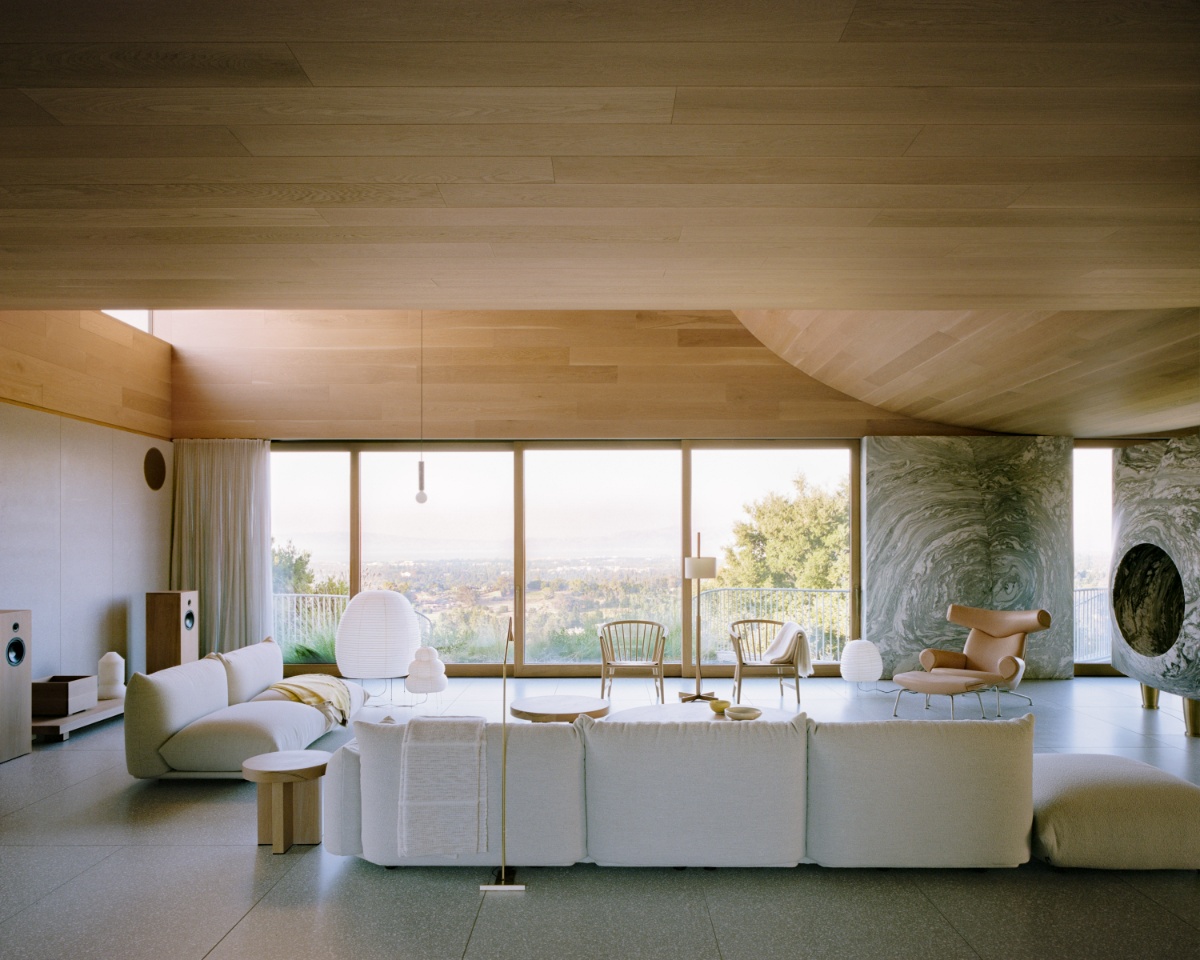The House of Horns, desigend by the architectural office WOJR, sits gently atop the foothills of the Santa Cruz Mountains, cohesively weaving the remnants of an old foundation into a new architectural vision with sweeping views of the San Francisco Bay. Photography by Nick Dearden.
The design gracefully integrates the ruin of an old foundation—originally meant for a partially constructed Spanish-style home—into a renewed architectural narrative. Rather than merely preserving what once was, the project transforms the existing condition with fresh principles of order, rhythm, and structure.
Even before the new form took shape, the concept of “horns” was inspired by the idea of musical instruments. The house is envisioned as a collection of instruments, each tuned to the cycles of the day and the changing seasons. It captures the interplay of light, the growth and decay in nature, and the unique character of the foggy Bay landscape.
The project begins by restoring the natural hillside topography, re-embedding the lower level of the house into the earth. This creates two distinct environments. Above - A single-story home sits on the hill, its walls gently meeting the ground on every side. Inside, one large open space serves as a gathering area for eating, cooking, and socializing. The ceiling features a series of inverted elliptical vaults crowned with skylights and clerestories, each designed to capture light from a specific angle. A subtle low keel runs down the center, gently dividing the space, while a striking stone fireplace—carved from Danby marble from Vermont—anchors the heart of the home.
Below, the lower section unfolds into a series of unique chambers. At its core lies a cave-like bathing area, supported by an ovoid column carved from stone. These rooms open selectively onto sunken courtyards, creating a series of intimate connections to the meadow and the distant horizon.
Surrounding the house, the hillside is returned to its natural wild state. A meadow of low-water California native grasses, perennials, scrub, and live oaks creates a multi-layered landscape that mirrors the house's own complexity. This carefully curated terrain extends the architectural experience into the natural world, making the house and its surroundings a unified, finely tuned instrument for experiencing the changing world around it.
The entire project was photographed by Nick Dearden using a medium format camera. His approach, deeply aligned with the ethos of the architects, embraces the limitations of daylight as an opportunity rather than an obstacle. Drawn to the delicate interplay of highlights and shadows, as well as the inherent pathos of film, Dearden’s images capture the House of Horns in a way that enhances its quiet, contemplative presence.
WOJR is an architectural practice based in Cambridge, Massachusetts, dedicated to creating spaces that evoke emotion, meaning, and a deep sense of place. Their work explores the intersections of form, atmosphere, and narrative, crafting designs that feel both timeless and profoundly personal. With a philosophy rooted in rigorous conceptual thinking, WOJR coheseviely bridges architecture, art, and cultural expression.
Nick Dearden transforms architectural photography into a meditative experience, redefining complex visual environments into singular, evocative images. He explains, “I’m always looking to distill things to their essence and produce images that convey singular ideas. I think that the real world can often be visually noisy and overbearing, so achieving moments of quiet reflection within my work has always felt like a worthy endeavour.”
His work—sensual, atmospheric, minimalistic, and quiet—is undoubtedly influenced by his formal education in architecture. With his unique perspective, Nick creates images that reveal the distilled essence of architectural form and spirit. Based in London, he works under the name Building Narratives, where he continues to explore the interplay between space, light, and emotion through his photography.


























